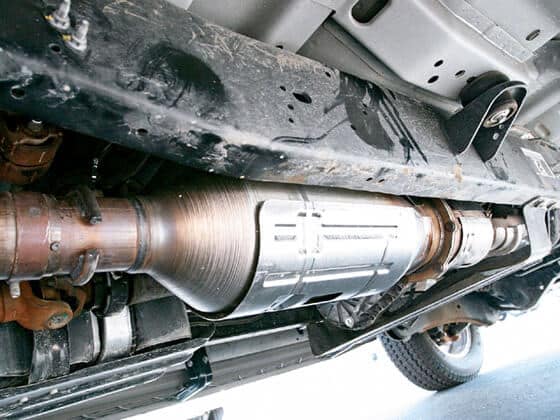What is DPF?
The Diesel Particulate Filter (DPF) is a filter that has thousands of tiny channels or honeycomb-shaped openings that trap the soot onto the channel walls and prevent the particulate matter (down to 1 micron) from exiting out the tail pipe. The honeycombed inner structure is covered with a layer of a chemical catalyst that contains small amounts of precious metals, usually platinum or palladium. These filters are used to minimise the number of hazardous particulates that escape the exhaust systems of diesel vehicles. The goal is to make the surrounding air cleaner and safer, especially in confined spaces.

In today’s modern 4wd diesel engines there is no shortage of expensive problems that can occur. Replacing a DPF can easily cost $4000 to $8000, and sometimes more, it’s a big cost…particularly when a vehicle is out of warranty!
Does my car have a DPF?
In today’s world of ever-tightening emissions regulations, diesel particulate filters (DPFs) have become commonplace to help keep those dirty diesel rolling off the production line. Without them, many diesel engines would have been retired in light of Euro 5 & 6 emissions standards.
So DPF, diesel particulate filters became a legal requirement in order for diesel cars to meet Euro 5&6 standards, which was introduced throughout Europe in 2009, and so if you have a diesel car, with a factory build date after 2008, then it is almost certain that your car will have a DPF system fitted.
However several manufacturers were fitting DPF systems long before the Euro 5 legislation became mandatory, in order to reduce the emissions from large-engined diesel vehicles or those with 4-wheel drive, so it is possible to find a car containing a DPF system as far back as 2002.
How do diesel particulate filters work?

Diesel Particulate Filters (DPF) catch soot particles to avoid them exiting the exhaust system. As any filter, they must be emptied regularly to maintain performance. For a DPF this process is called ‘regeneration’. In this process, the collected soot is burnt off at high temperature to leave only ash.
